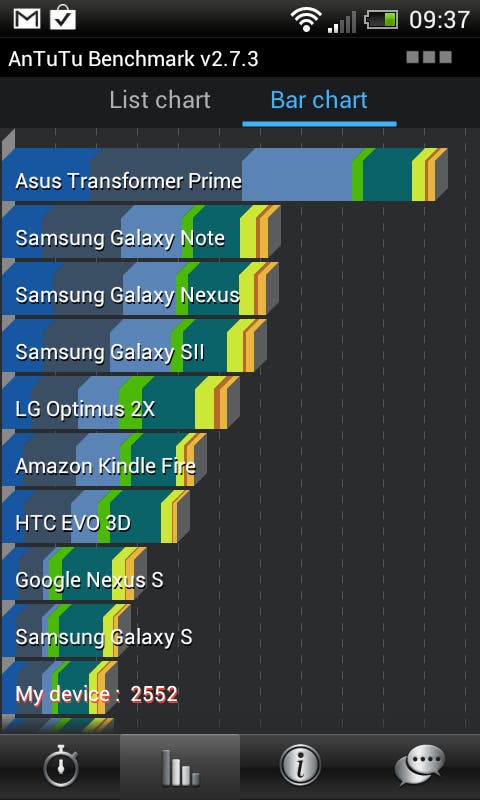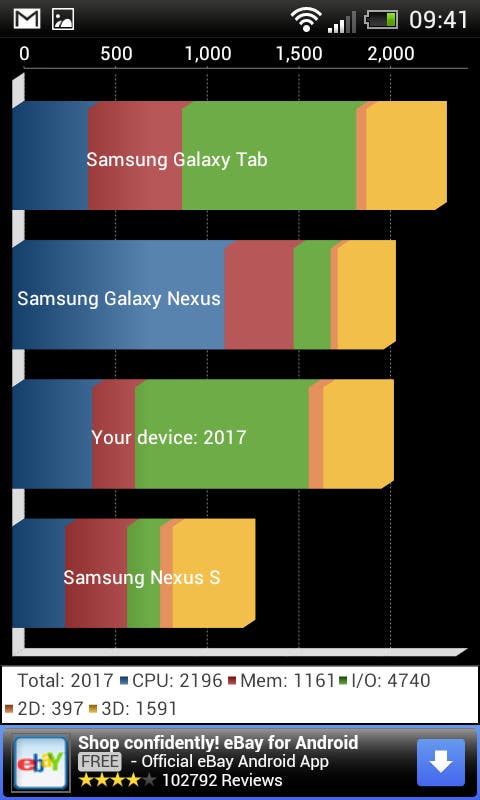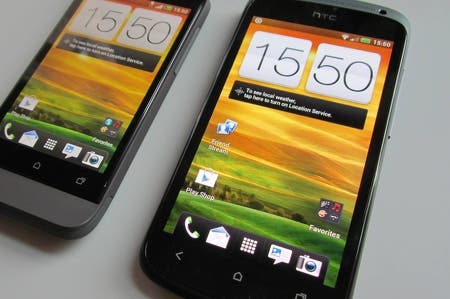HTC One S/One V Reviews
HTC's 2012 Android family grows by two, but which is the One?
When you're gunning for commercial success in the mobile phone arena it often pays to cover all of your bases, and that seems to be part of HTC's battle plan for this year. Bruised and bloodied by disappointing financial results of 2011, the Taiwanese manufacturer is on the resurgence, keen to claw back market share lost to the likes of Samsung, LG and Sony Ericsson. We've already seen the blisteringly fast HTC One X - powered by NVIDIA's Tegra 3 quad-core CPU - and now it's time to cast a furtive eye over the remaining two members of the brood: the One S and One V, both of which are running the latest version of Google's mobile OS.
It seems almost disingenuous to refer to the One S as a mid-range challenger, as it comes with the kind of features that many rival companies are putting into their flagship handsets. Boasting a dual-core processor, 1GB of RAM, a 4.3-inch Super AMOLED screen and 16GB of internal storage, the One S compares very favourably with the likes of the Sony Xperia S and Samsung Galaxy Nexus.
Unlike arch-rival Samsung - which seems obsessed with using plastic as much as possible these days - HTC has dabbled extensively with metallic case designs over the past few years. Although the One X features a polycarbonate shell, the One S is fashioned from a single piece of aluminium - rather like the HTC Desire S and HTC Legend before it. This makes for a truly beautiful handset, and the sleek metalwork is only broken by two pieces of plastic (one housing the SIM card slot, the other the microphone and speaker) and the screen itself.
Once you scoop it up, it's hard not to fall in love with the phone's aesthetics. Because it's a single slab of metal, the One S feels astonishingly sturdy - something which is made even more remarkable by the fact that it's officially HTC's thinnest phone ever, with an overall depth of just 7.8mm.
AMOLED Screen and Dual Core Power
For those of you who found the finger-stretching enormity of the One X's 4.7-inch display a little too intimidating, the One S presents a rather more manageable 4.3-inch screen. Once again, it uses Super AMOLED tech to offer bright colours and deep blacks, but there are some caveats to consider here.
First up, it uses a Pentile pixel arrangement, which leads to a peculiar 'dotty' effect. The Galaxy Nexus also uses a Pentile screen, but the effect is much less noticeable because of the 720x1200 HD resolution. The One S can only muster 540x960 pixels, and therefore the effect is rather more obvious.
However, an upshot of that lower-resolution screen is increased speed. The One S has a dual-core Snapdragon CPU running at a brisk 1.5GHz, and is supported by 1GB of RAM. Because there are fewer pixels to push around, the processor is able to achieve to impressive results in benchmark tests.
Camera and Memory
The One S shares the same camera as the One X, rating at eight megapixels and capable of recording video at 1080p high-definition. Despite this similarity, we noticed the picture quality is noticeably inferior on the lower-spec handset. Shots taken in bright light feature passable colours and contrast, but taking photos in dimly-lit environments introduces a sharp drop in clarity. Even photos taken on a dull day seem to suffer.
Video recording presents a similar situation, but the 1080p footage is at least smooth and sharp - certainly more than acceptable for a mobile phone, although you may want to think twice before retiring your dedicated handycam.
"This is a seriously decent phone - were it not for the quad-core HTC One X, this handset could quite easily be the manufacturer's flagship smartphone product."




In order to keep the One S as svelte as possible, HTC has had to make some cutbacks. One is the lack of a removable battery, and another is the inclusion of a Micro SIM card slot, so you may need to order a replacement SIM before you can use the handset. However, the most irksome omission is the absence of a microSD expansion slot. Once the phone's memory is full, you have no way of adding in more space - something that is possible on the Samsung Galaxy S2, which boasts the same amount of internal storage.
What's even more exasperating is that you don't have access to the full 16GB - only 10GB is available to the user, with the remaining 6GB presumably occupied by essential OS files and pre-installed applications. 10GB will prove too small a figure for most seasoned Android owners, even if they choose to use Google's cloud-based music and photo storage services.
HTC One S: The Digital Foundry Verdict
In reality, the One S isn't truly a middleweight proposition; the reason for its 'halfway house' position within HTC's 2012 portfolio is because the One X is so stunningly powerful. Any other company would be happy to market the One S as its leading device, and that speaks volumes of just how keen HTC is to reclaim its former glories. But this creates a problem for potential buyers - why would you purchase the One S when its more illustrious sibling is available for almost the same price?
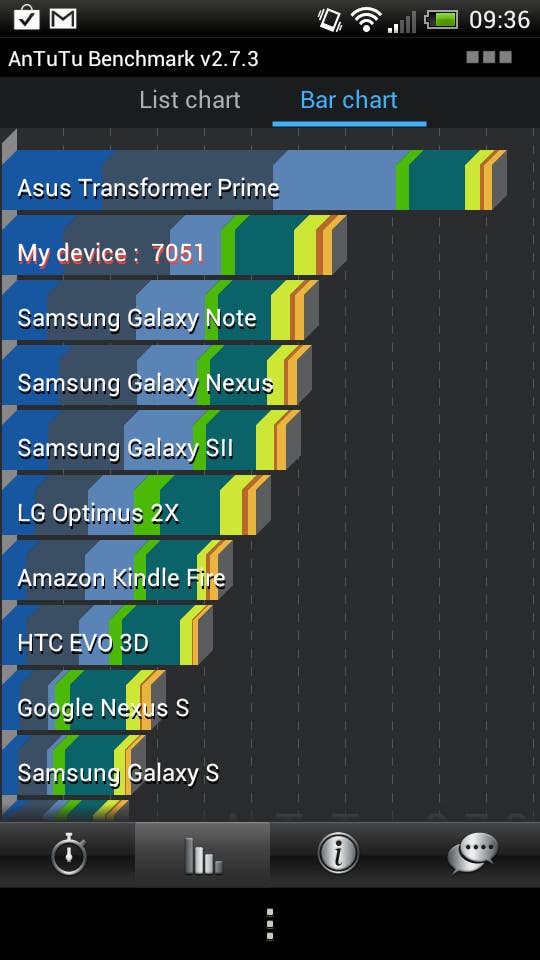

HTC One V: The Rearguard
The One V trails in the wake of its more powerful brethren, and offers weaker technical specifications in a smaller, more compact package. With only a single-core 1GHz chip and a 3.7-inch LCD screen, this isn't a device which is likely to impress - yet it arguably makes more sense than the One S, which is a little too close to the One X for comfort.
Android historians may recall the HTC Hero and HTC Legend from a few years ago; both sported pronounced 'chins' and the latter pioneered the innovative aluminium unibody concept. Compared to the slate-like design of its siblings, the One V looks and feels like it should belong in a different range altogether; while the One X and S share some aesthetic ideas, the V is so dissimilar it might as well have been given an entirely different moniker.
However, the One V is comparable with the One S in one way - it boasts the same solid construction, thanks to the metal bodywork. Again, this is a single piece of aluminium, rather than two sides crudely fused together; this lends the device a rigid structure which makes it feel solid and - despite its mid-to-low range price tag - reassuringly expensive.
Single Core CPU and Expandable Storage
With a SIM-free cost of around half of what the One X sets you back, it should come as no great shock to learn that the One V lacks dual-core power. Instead, HTC has gone with a single-core 1GHz chip. This by no means makes the phone a sluggard - most of Sony Ericsson's 2011 portfolio came packed with the same tech.
In fact, when you first begin to mess around with the One V you'd be forgiven for assuming it had a more powerful CPU beating at its heart. HTC's Sense 4.0 user interface positively zips along, and transitions between menus and screens are smooth and silky. It's only when you get down to the nitty gritty of running applications, playing games and surfing the web that you spot the first signs of strain; even so, it's not enough to totally ruin the experience.
4GB of internal memory is present on the One V, but unlike the One S, you can augment this amount with microSD cards. The microSD port is concealed behind a small plastic flap on the back of the handset, which also houses the SIM card port. Like the other two members of the One family, the One V does not feature a user-replaceable battery.
No-Frills LCD Screen and 5 Megapixel Camera
The One V isn't packing Super AMOLED tech, but instead opts for a bog-standard LCD panel, with a resolution of 480x800 pixels. To be fair, the absence of AMOLED isn't a deal-breaker, and the display is bright and punchy enough to keep most people happy.
The 3.7-inch size may also find favour with small-handed individuals or those who see the 4.7-inch display of the One X as an unwelcome step into tablet territory. Comparatively speaking, the screen is small when compared to HTC's other new phones, but alongside the iPhone 4S - which is saddled with a 3.5-inch panel - the One V comes out looking a little more impressive.
"For a modest sum, you get a gorgeous-looking device which has Android 4.0, a solid unibody design and expandable storage - the latter being a feature that even the One X and One S can't provide."

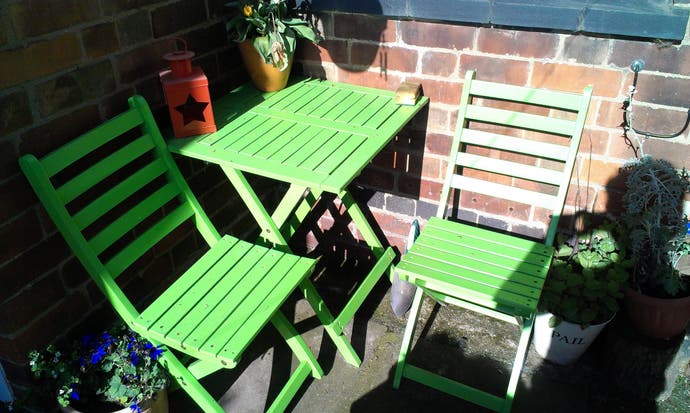

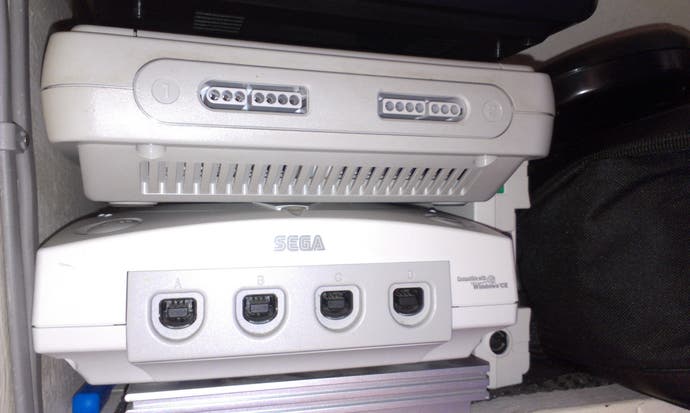
With just 5 megapixels to play around with, the One V is slightly less adept at photos than the One S. The camera is still nippy and responsive though, although it suffers from the same lack of low-light prowess. HD video recording makes the cut, but it's 720p only. You'll also have to make do without a front-facing camera, so Android 4.0's novelty Face Unlock feature is missing.
HTC One V: The Digital Foundry Verdict
A quick glance at the specifications for the One S and One V may instantly lead you to assume that the former represents the most likely purchase, but depending on what kind of device you're after, that may not necessarily be the case.
With a SIM-free price of around £200-£250 and contact prices hovering around the £20 mark, the One V offers a low-cost entry into the Android arena. Pay as you go deals may reduce the off-contract price even further, as they tend to be pitched below SIM-free RRPs.
For a modest sum, you get a gorgeous-looking device which has Android 4.0, a solid unibody design and expandable storage - the latter being a feature that even the One X and One S can't provide. Granted, the lack of technological muscle impedes the phone's chances of playing the very latest games and catering to the whims of hardcore gadget fiends, but that doesn't alter the fact that the One V is one of the best mid-range handsets available at the moment - it's just a shame that it will most likely be overshadowed by the bluster of its two siblings.
